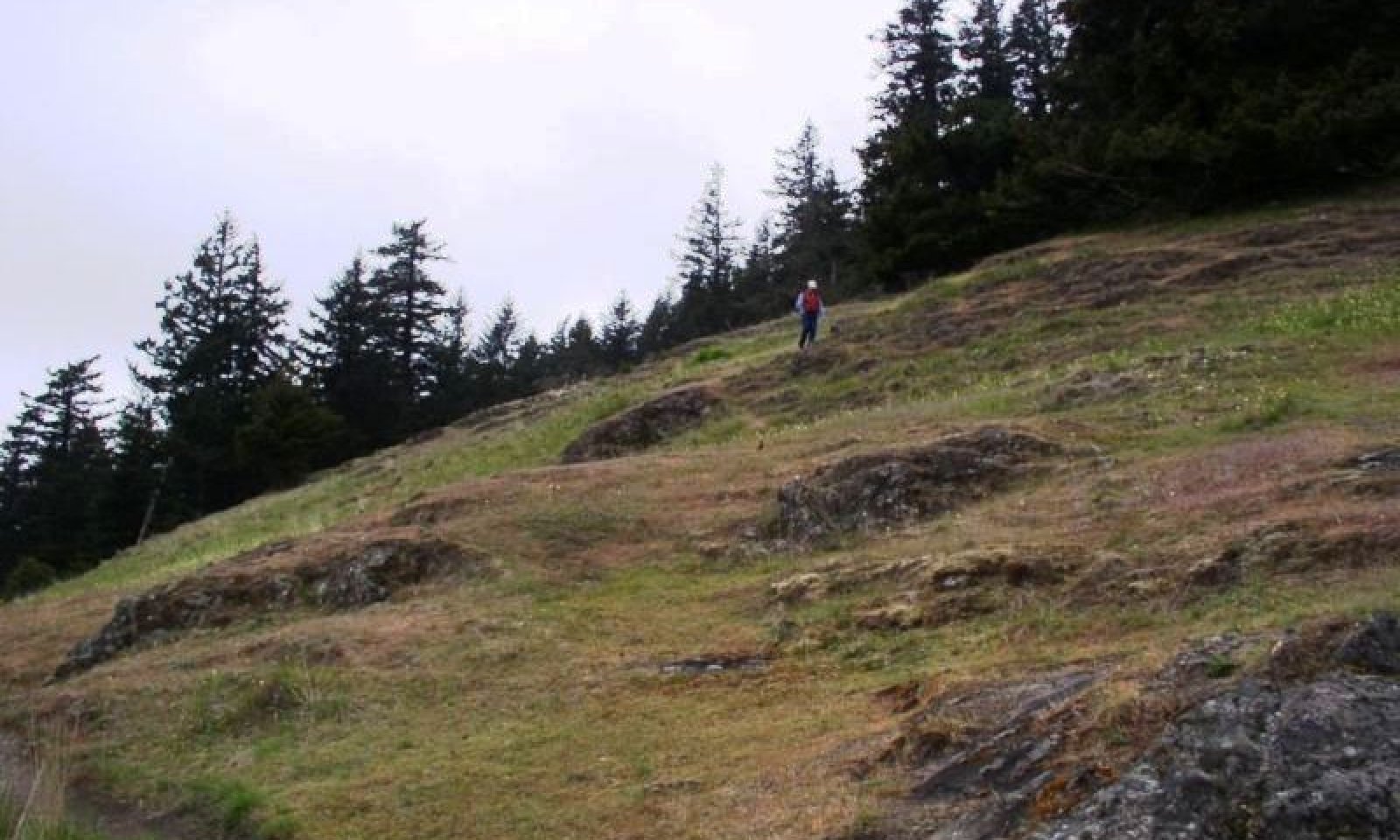
Prairie Bald
Scenario model
Current ecosystem state
Select a state
Management practices/drivers
Select a transition or restoration pathway
- Transition T1A More details
- Transition T1B More details
- Restoration pathway R2A More details
- Transition T2A More details
- Restoration pathway R3A More details
- Restoration pathway R3B More details
-
No transition or restoration pathway between the selected states has been described
Target ecosystem state
Select a state
Description
These areas were historically kept free of extensive brush and tree cover by burning. Typical native plant species found on the site include Roemer’s fescue (Festuca roemeri), camas (Camassia quamash), prairie junegrass (Koeleria macrantha), California oatgrass (Danthonia californica), field chickweed (Cerastium arvense ssp strictum) and Oregon white oak (Quercus garryana). In some areas, these sites are influenced by various abiotic factors such as prevailing winds (especially across marine waters), proximity to unprotected marine waters, or elevation, which will cause these locales to be cooler than the climate generally associated with these soil series. This is referred to as the Cold Phase in the ecological site description. The effect on the plant community is generally the absence of Oregon White Oak from the community.
Submodel
Submodel
Mechanism
This transition occurs when uncontrolled disturbance is persistent in the system, such as: overgrazing; mowing in the wrong season, wrong height, or at the wrong frequency; vehicle use that causes vegetation damage; or too-frequent fire. In addition, non-native plant seeds or propagules or present on or near the site.
Mechanism
No fire or other disturbance – This transition occurs when disturbances, either natural or man-made, are reduced or eliminated through actions such as fire control, or cessation of activities such as mowing, soil perturbation grazing or vehicle access.
Mechanism
Restoration – removal of non-native species and restoration or the original plant community through methods such as prescribed fire, brush control, invasive plant control, mowing, thatching, grazing, and/or soil aeration and reseeding.
Mechanism
No fire or other disturbance – This transition occurs when disturbances, either natural or man-made, are reduced or eliminated through actions such as fire control, or cessation of activities such as mowing, soil perturbation grazing or vehicle access.
Mechanism
Tree Removal and Restoration – Harvest and removal of trees from the site; or girdling of trees. Additionally, removal of non-native species grass, forb and shrub species and restoration or the original plant community through methods such as prescribed fire, brush control, invasive plant control, mowing, thatching, grazing, and/or soil aeration and reseeding.
Model keys
Briefcase
Add ecological sites and Major Land Resource Areas to your briefcase by clicking on the briefcase (![]() ) icon wherever it occurs. Drag and drop items to reorder. Cookies are used to store briefcase items between browsing sessions. Because of this, the number of items that can be added to your briefcase is limited, and briefcase items added on one device and browser cannot be accessed from another device or browser. Users who do not wish to place cookies on their devices should not use the briefcase tool. Briefcase cookies serve no other purpose than described here and are deleted whenever browsing history is cleared.
) icon wherever it occurs. Drag and drop items to reorder. Cookies are used to store briefcase items between browsing sessions. Because of this, the number of items that can be added to your briefcase is limited, and briefcase items added on one device and browser cannot be accessed from another device or browser. Users who do not wish to place cookies on their devices should not use the briefcase tool. Briefcase cookies serve no other purpose than described here and are deleted whenever browsing history is cleared.
Ecological sites
Major Land Resource Areas
The Ecosystem Dynamics Interpretive Tool is an information system framework developed by the USDA-ARS Jornada Experimental Range, USDA Natural Resources Conservation Service, and New Mexico State University.



